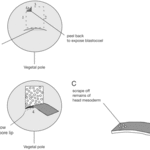Science category landing
Life Sciences

The team of Denis Réale, Professor in the Department of Biological Sciences at Université du Québec à Montréal, recently published some remarkable research findings. Reconstructing the genetic history of a population of mouflons descended from a single pair, the researchers demonstrated that the animals’ genetic diversity increased over time, contrary to what the usual models predict.
These results contradict the belief that a population descended from a small number of individuals will exhibit numerous deficiencies and reduced genetic diversity.
The mouflon population of the Kerguelen…

Mixotrophs are species of algae that act as "plants" when they produce their own food and as “animals” when they eat other plants.
Wanderson Carvalho from the University of Kalmar is studying these algae to understand their potential impact on the environment, the economy and public health issues.
In terrestrial ecosystems, plants are the only living beings capable of producing their own food, thanks to the chlorophyll and other pigments which can capture sunlight energy. With this energy and nutrients (e.g. nitrogen and phosphorus) from land and carbon dioxide from the atmosphere they…

Stem cell biology takes another exciting leap forward as scientists report that normal tissue cells can be reprogrammed to exhibit many of the properties that are characteristic of embryonic stem cells, including the ability to give rise to multiple cell types and contribute to the germline.
These findings provide strong support for the rationale that it may be possible to generate stem cells with nearly unlimited potential directly from a patient’s own cells, an idea that has significant implications for regenerative therapeutics.
Although transplantation of stem cells generated from human…
A team of researchers from Arizona State University, Purdue University and the Norwegian University of Life Sciences has discovered evidence that honeybees have adopted a phylogenetically old molecular cascade – TOR (target of rapamycin), linked to nutrient and energy sensing – and put it to use in caste development.
Effect of rapamycin/FK506 pharmacology on caste characters in honey bees (Vehicle = 2% ethanol in insect saline; FK+R = sequential treatment of FK506, rapamycin; R = rapamycin; W = worker as comparison). In queen-destined individuals, rapamycin: a, prolonged development and b,…

Like hobos on a train, HIV, the virus that causes AIDS, uses a pre-existing transport system to leave one infected cell and infect new ones, Hopkins scientists have discovered. Their findings, published in the June issue of Plos Biology, counter the prevailing belief that HIV and other retroviruses can only leave and enter cells by virus-specific mechanisms.
“It appears that cells make HIV and other retroviruses by a naturally occurring export mechanism,” says Stephen Gould, Ph.D., Professor of Biological Chemistry at Johns Hopkins. Cells normally export certain membrane-bound molecules to…

It could be an artist’s depiction of someone’s stomach before and after a rather decadent meal. But it is a 3-D cryoelectron microscope reconstruction of the cross-section of a virus, before and after cramming itself full of its own DNA.
The virus, phi29, has a tiny motor that pumps its DNA into the capsid—outer shell—during the assembly process. The potential energy of the tightly coiled DNA may help phi29 inject its genetic material into the bacterial cells it infects. Now a team led by physicists at the University of California, San Diego has used laser tweezers to measure the forces…

The basic Keller explant is a rectangle of dorsal mesendoderm and ectoderm from an early-gastrula-stage Xenopus laevis embryo. It is ~60° to 90° wide, extending from the bottle cells to the animal pole. This protocol describes how to dissect, assemble, and cultivate Keller explants. The purpose of Keller explants was initially to allow observation of gastrulation movements, particularly convergent extension, in culture. This is difficult to do when explants curl up, but in Keller sandwiches, the explants are cultured flat, either as a single sheet (open-face explant) or more frequently as two…

“When we began the Human Genome Project, we anticipated it would take 15 years to sequence the 3 billion base pairs and identify all the genes,” said Dr. Richard Gibbs, director of the Human Genome Sequencing Center. “We completed it in 13 years in 2003 – coinciding with the 50th anniversary of the publication of the work of Watson and Dr. Francis Crick that described the double helix.
"Today, we give James Watson a DVD containing his personal genome – a project completed in only two months. It demonstrates how far the sequencing technology has come in a short time.”
The $1 million, two-…

Many insects living in northern climates don't die at the first signs of cold weather. Rather, new research suggests that they use a number of specialized proteins to survive the chilly months.
These so-called "heat-shock proteins" ensure that the insects will be back to bug us come spring.
A study of flesh flies and a handful of other insects suggests that they have an arsenal of protective heat-shock proteins that are turned on almost as soon as the temperature dips. Until this new study, researchers knew of only two such proteins that were activated in flesh flies during cooler weather.
"…

Inhaling oxygen is only the first step in a long journey through the nooks and crannies of the body. The oxygen is then transported via the blood to all cells in the body. The same goes for nourishment from food we eat. Inside the cell, the oxygen and nourishment are transformed into energy and carbon dioxide, which we breathe out. In a new dissertation from Stockholm University in Sweden, Kristina Faxén has mapped how so-called cell breathing takes place.
“I am studying how cells breathe. In recent years, more and more diseases, like Alzheimer’s, have shown to have to do with cell…